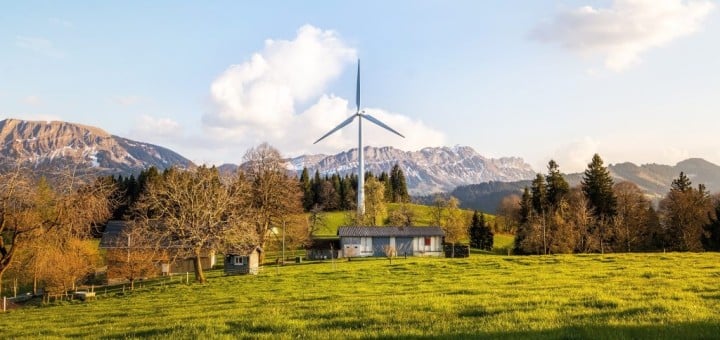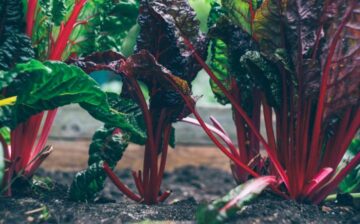People all over the world recognize the importance of being kind to the environment. Saving the environment sounds impossible. However, if every person on the planet does their fair share, there will be a positive outcome. Making your home environmentally friendly is the first step toward a bigger environmental impact. Besides that, green living in your home saves money and energy, and it adds value to your home. For you to save the environment, you should understand environmental pollutants.
Environmental degradation is caused by climate change, resource depletion, pollution, and carbon emission. Keep tabs in your home on how you treat your air, soil, and water. Take special notice on your heating, noise levels, and garbage disposal. If you live near marine life or wildlife, you should be aware of how your home is affecting their home. Here are some tips on how to reduce your home’s environmental impact.
Build Your Home Using Green Ideas and Use Energy-Efficient Appliances
If you haven’t already built your home, incorporate green ideas at the building stage. Use green technology and eco-friendly building ideas. Build a home that is carbon neutral and energy-efficient. Eliminate large spaces that have no functional value. Ensure that you use green insulating materials. Use sustainable building materials for framing, roofing, insulating, cabinets and counters, and flooring. Reuse building materials such as reclaimed wood. Recycled plastic, tiles, aluminum, and glass are also useful. When your home is already environmentally-friendly, the rest of your lifestyle choices will fall in line easily.
When shopping for home appliances, go for ones with the energy star logo. For appliances to carry that logo, they must meet certain energy efficiency guidelines. If you have old appliances in your home, replace them with modern energy-saving ones. If you have multiple appliances, consider reducing to just the ones you need. You do not need a fridge for your kitchen and another one for your garage.
Invest in Good-Quality Solar Panels and Switch to Green HVAC Technology
The sun is the ultimate source of low-cost clean energy. However, most people shy away from it because it requires capital to invest. With a good solar power setup, you save money in the long term. Take advantage of your geography to position your panels. Using solar power can also get you into grants programs and other governmental incentives. You can harness and sell excess power back to your utility company and make extra cash while saving the environment.
Your HVAC system is one of the biggest energy guzzlers in the home. However, that does not have to be the case. You can reduce your power consumption by a large percentage by installing a green HVAC system. Consider installing smart thermostats to run your HVAC system efficiently. They monitor temperature and energy usage. Another option is installing a zoned HVAC system. It sets different temperatures in different zones according to their needs. Other green options include ice-powered cooling systems, geothermal heat pumps, DeVAP air-conditioning, and solar-powered air-conditioning. All these options help you to minimize power consumption.
In case of power outages or times of high electricity demand, you can use a home battery backup system like the Tesla Powerwallas a source of clean and renewable energy. Homeowners can store excess energy generated by solar panels or other renewable energy sources and use it to power their homes when needed. This can help to reduce reliance on fossil fuels and the associated greenhouse gas emissions that come with traditional energy sources. A home battery also reduces strain on the electrical grid, which can lead to fewer power outages and a more reliable electricity supply overall.
Landscape and Use Rainwater and Tankless Water Heating Systems
Surround your home with green landscaping. Trees and shrubs provide fresh air and cooling for your home. Plant trees on the eastern and western sides of your home to prevent direct sunlight from falling on your windows. Recycle and reuse kitchen water for gardening purposes. Recycle dead plants by making manure and animal feeds. If you live in arid or semi-arid areas, use xeriscaping methods to keep your landscape green. Use solar power for lighting your walkways and water feature pumps. Avoid using harmful aerosols and chemicals in your landscaping.
Collect rainwater and store it in tanks. This can be used for your toilets, sprinklers, gardening, and other outdoor uses. Rainwater is available throughout the year. It is healthy for your plants and animals. Water heater tanks are energy guzzlers. To maintain hot water, the heating cycle must remain on at all times. With tankless water heaters, you get hot water on demand. They are efficient in saving water and power.
Install a Green Plumbing System and Seal Energy Leaks
Green plumbing systems save water and energy. Install tanks, faucets, fixtures, and accessories that use less water. Install a rainwater capture and filter system to supplement the main water source. Install low-flow or dual flush toilets to save water. Use energy-saving dishwashers, washing machines, and showerheads. Recycle gray water from your kitchen and sinks for outdoor usage. Purchase environmentally friendly plumbing materials and fixtures. Avoid using harsh chemicals for cleaning and fixing plumbing issues.
You can conserve energy by sealing air leaks in your home. Your exterior doors are the main avenues of air leakage. Glass doors have a lower R-value than metal and polyurethane doors. Therefore, you lose more thermal energy with glass doors. Single pane windows contribute to 30 percent of heating and cooling expenses. Air ducts that aren’t properly insulated cause air leaks. Use green insulation materials and make sure every inch of the house is properly insulated. Use energy star doors and windows to ensure that they do not compromise your air-conditioning system. When you are not using your fireplace, keep the flue closed.
Recycle, Reuse, and Use Smart Lighting Solutions
Recycling and reusing materials have a positive impact on the environment. Recycle everything that you can from clothes, trash, water, building materials, and others. Come up with a system of reusing materials for the benefit of the home. Use your kitchen water and food remnants to feed your garden. Use leftover building materials to make walkways and other landscaping needs. In the long run, a green home will be a good investment.
Smart lighting solutions save energy for your home. Modern technology provides you with lighting systems that connect to apps and smart software. You can automate your lighting or control it remotely. Eliminate traditional lighting systems that keep lights on for no reason. Use low-energy bulbs and systems that save power.
Finding Help with Moving Professionals
We hope you found this blog post on Top 5 Ways to Reduce Your Home’s Environmental Impact useful. Be sure to check out our post on Which Smart Home Devices Help Lower Energy Bills? for more great tips!
Have Experience in the Moving Industry? Want an Additional Income Stream? Work With All Around Moving!
Partner with us, All Around Moving Services Company, Inc., and we’ll help you make money. Click here to learn more.






